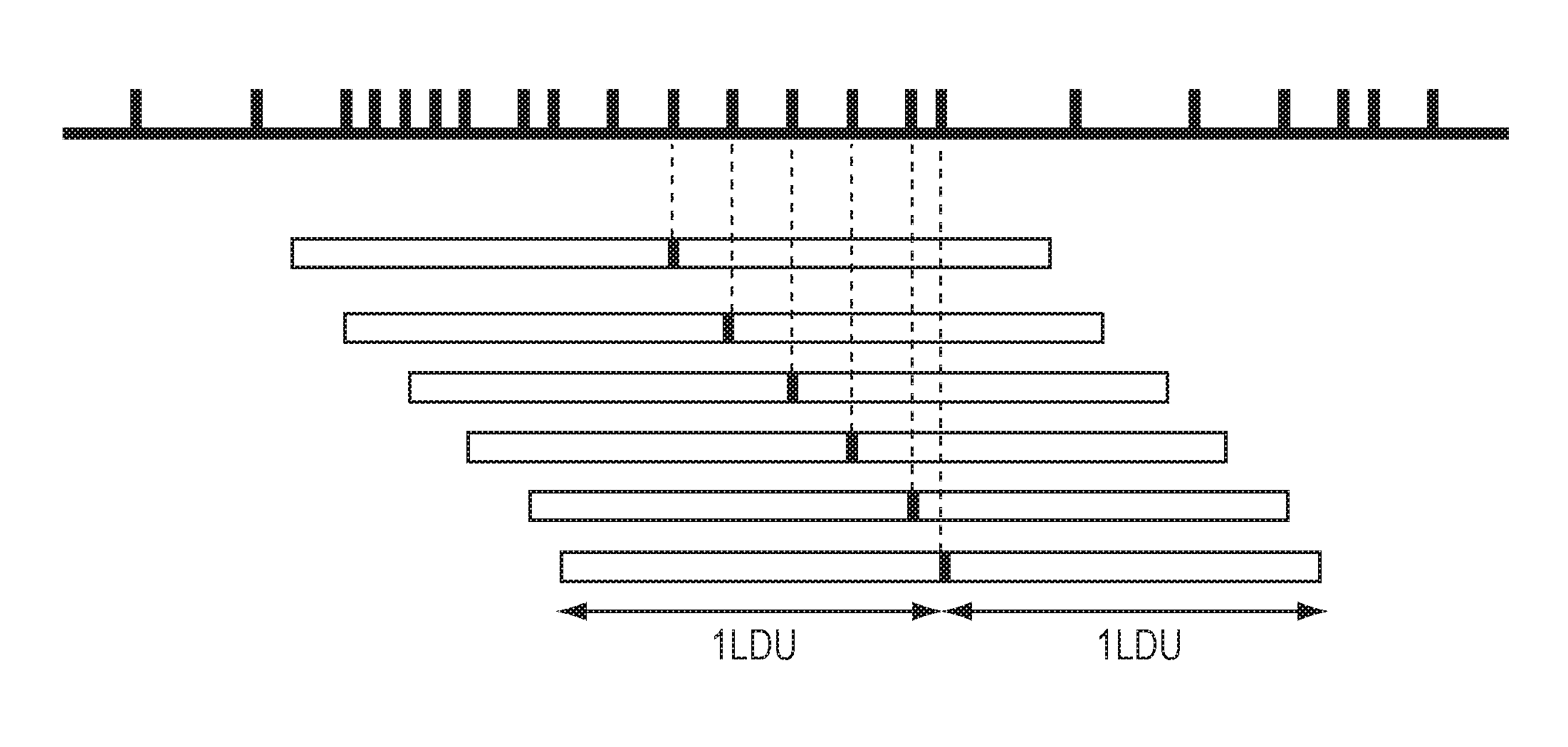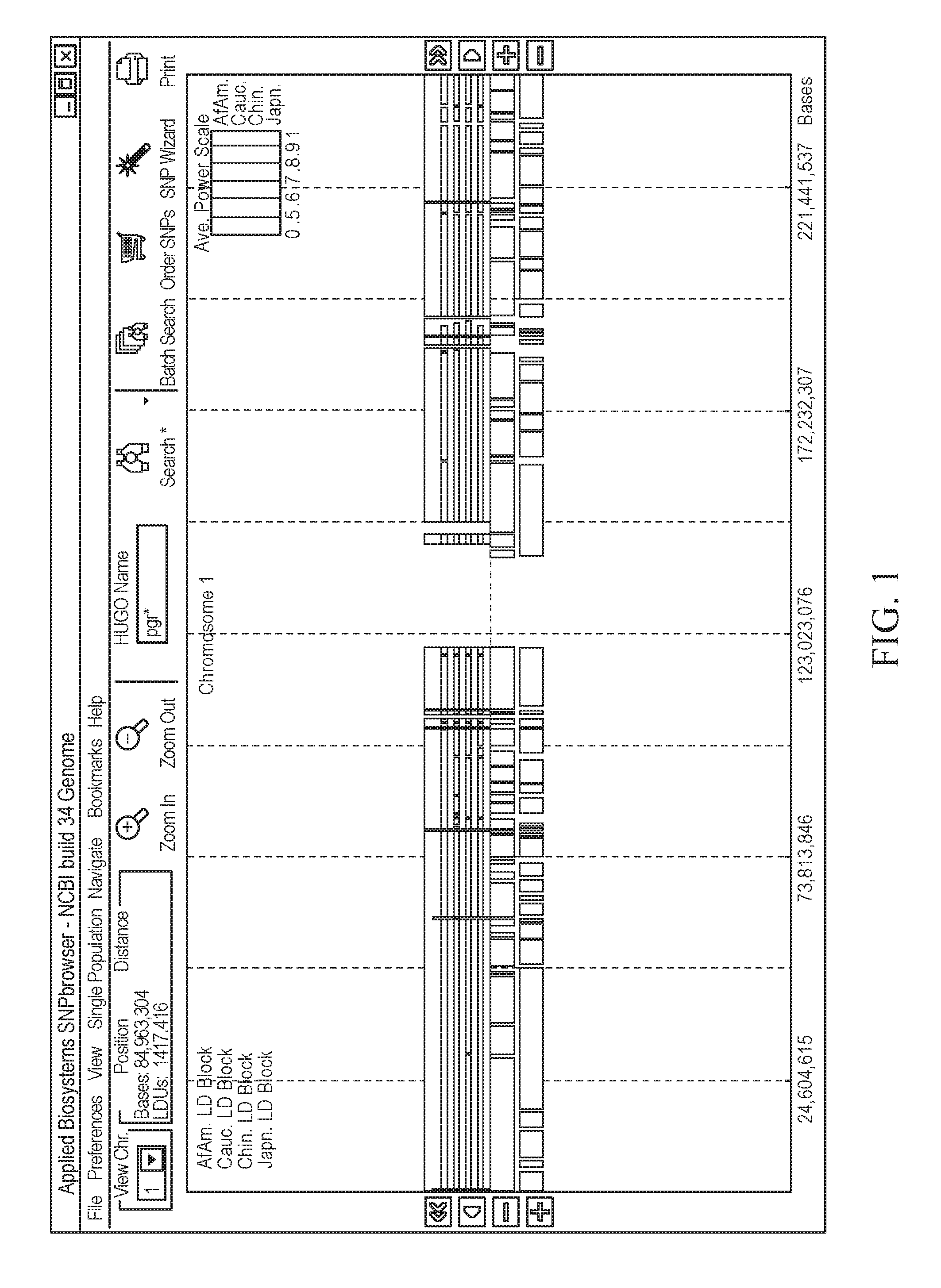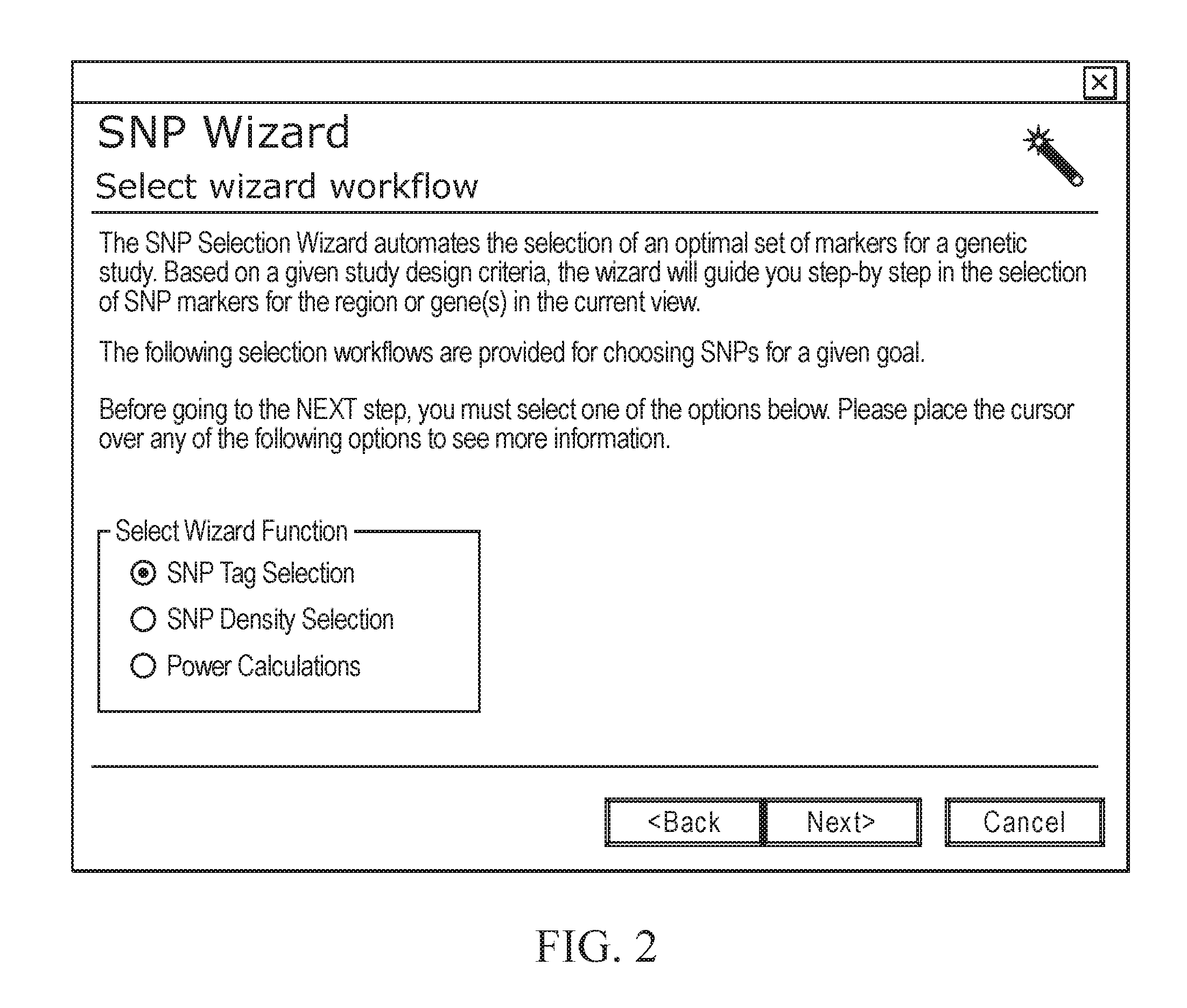Methods and Workflows for Selecting Genetic Markers Utilizing Software Tool
a software tool and workflow technology, applied in the field of methods and workflows for selecting genetic markers utilizing software tools, can solve the problems of not all candidate polymorphisms are suitable for selection as markers in genetic studies and for the development of genotyping assays, and the genome may lack a sufficient number of validated snps, so as to facilitate the selection of snps and facilitate the tagging of snps
- Summary
- Abstract
- Description
- Claims
- Application Information
AI Technical Summary
Benefits of technology
Problems solved by technology
Method used
Image
Examples
an example
[0211]The process for selecting the minimal number of SNPs for an association study is described in FIGS. 25-25, and the results can be found in Table 2. The study involves the LIM gene from the Caucasian population sample region in FIG. 25 (chromosome 4; 95,582,389-96-96,059,640 bp). The work-flow demonstrates how SNPbrowser Software and the tSNP wizard (FIG. 26) combine the density selection process with tSNP selection to determine the best method. Table 2 shows the number of SNPs required to tag the LIM gene, as defined by the haplotype R2 and pairwise r2 methods, at a variety of thresholds (85%, 95% and 99%).
TABLE 2Results for Six Possible ChoicesHaplotype R2Pairwise r2TotalGenotypes / 1,000TotalGenotypes / 1,000SNPsSamples*SNPssamplesNo selection 30**30,000100% 30**30,000100% 0.99 r21414,10047%2323,23077%0.95 r21313,65045%1919,95067%0.85 r2 910,62035%1314,34048%**Although 32 SNPs are present, two have no measured minor allele frequency in Caucasians; therefore, they are not consid...
PUM
 Login to View More
Login to View More Abstract
Description
Claims
Application Information
 Login to View More
Login to View More - R&D
- Intellectual Property
- Life Sciences
- Materials
- Tech Scout
- Unparalleled Data Quality
- Higher Quality Content
- 60% Fewer Hallucinations
Browse by: Latest US Patents, China's latest patents, Technical Efficacy Thesaurus, Application Domain, Technology Topic, Popular Technical Reports.
© 2025 PatSnap. All rights reserved.Legal|Privacy policy|Modern Slavery Act Transparency Statement|Sitemap|About US| Contact US: help@patsnap.com



